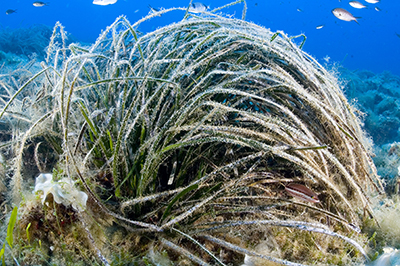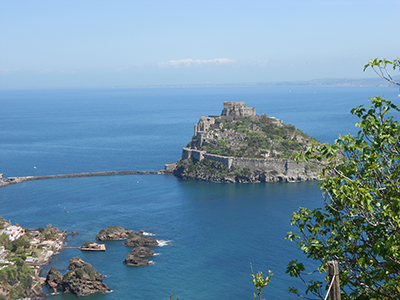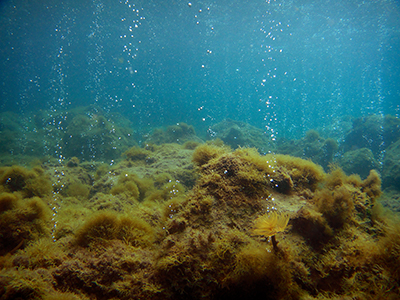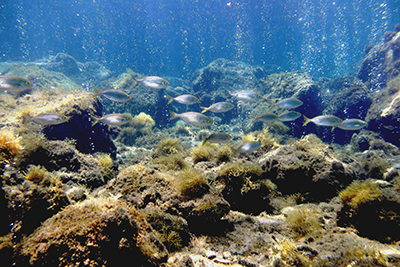The staff of Villa Dohrn-Benthic ecology is carrying on long-term research in some sites around the Island of Ischia, which represent pilot stations for continuous and multifacets monitoring of species, communities and ecosystems which have some uniqueness or high ecological importance since include species and habitat protected in the frame of the European Community legislation.
Posidonia oceanica systems off Lacco Ameno and Castello Aragonese
These are two seagrass meadows around the Island of Ischia of the higher plant species Posidonia oceanica, which is protected by the European legislation and it is considered one of the reference habitat for the evaluation of the water quality and ecosystem health in the frame of the Marine Strategy. Both Posidonia meadows have been included in the network of the marine sites of the LTER-Italy ("Italian long-term ecological research network"), and have been studied for various ecological aspects since many years from the staff of Villa Dohrn. Additional details about these two sites and about the LTER-Italy project are available on the specific item (LTER-Italy) of this web site, as well as at: http://www.lteritalia.it

Volcanic CO2 vents of the Castello Aragonese and other sites around the Island of Ischia
These pilot stations represent unique sites where gaseous CO2, from volcanic origin, is bubbling under water, at ambient temperature and salinity, thus provoking only a natural acidification of the surroundings sea-waters. Around the waters of the Castello Aragonese of Ischia, in particular, the bubbling is creating a gradient of pH-pCO2 concentration and acidification affecting mainly the shallow rocky vegetated reef and a nearby shallow Posidonia oceanica system. In the other sites around Ischia, located not far from the Castello vent’s system, the bubbling and local acidification is affecting some of the most typical habitat of the Mediterranean, such as semi-obscure cave habitat, coralligenous outcrops, deeper rocky reefs and Posidonia meadows, as well as sandy and detritic bottoms. As a whole, these sites allow to study in real time the effects of ocean acidification, in relation to the near-future scenarios of climate change, and are utilized by the staff and various collaborators/guests as natural laboratories to perform in situ observation and experiments.



Research project ended in 2014-2015
- ASSEMBLE
- COST-Action Seagrass Productivity ES0906
- Tropical signals (CIESM)
Research project in progress:
- MIUR Project Bandiera RITMARE (2012-2015)
- VulnerClima (Ritmare-Cofund Bandiera)
- "Windows on the future ocean" (National Geographic, USA)
- NEMO (NExt generation Marine Observatories) (Premiali MIUR)
- Premiali ACIDIT
- FP7 - Perseus (Policy-oriented marine environmental research in the southern european seas)
- LTER-Italia
- LifeWatch MedPan
- PTSZN(2013-2015)- Program 4. Environmental variability, climate change and anthropogenic impacts: adaptive responses in species, communities and benthic systems.










